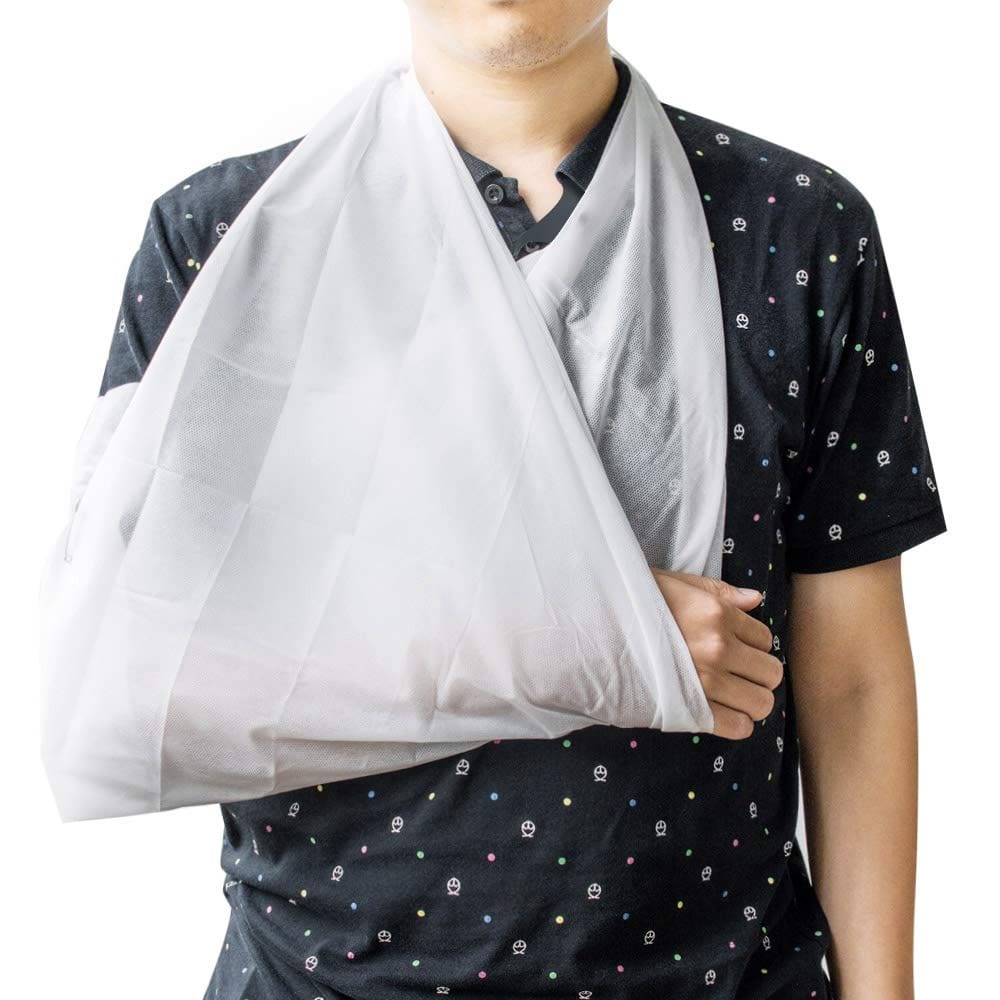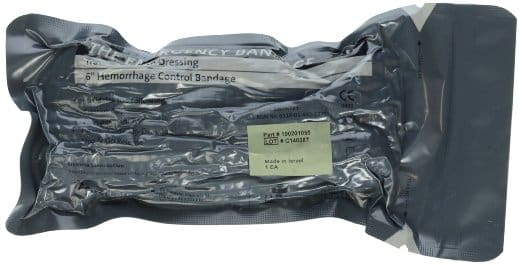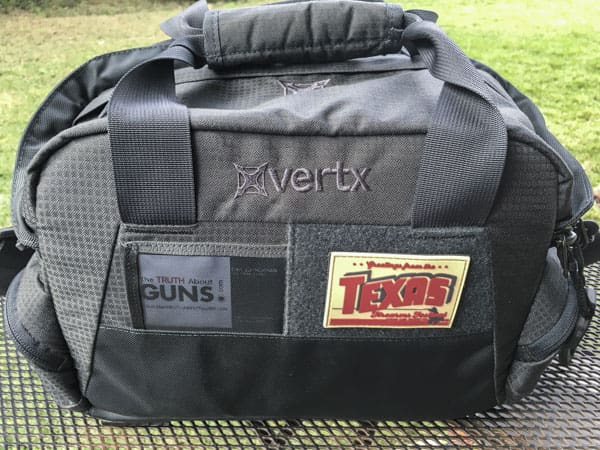Gun gurus spend a lot of time and effort training gun owners to shoot their firearms safely and effectively in defensive situations. But the reality is you’re more likely to need first aid — either for yourself or for someone else — than engage in a defensive gun use.
Setting aside everyday emergencies like traffic accidents and home emergencies, a safe and fun day on the gun range can go south in a split second. Whether someone deliberately turns a firearm on their fellow shooters or improperly loaded ammunition causes your firearm to go boom there are plenty of ways to find yourself in need of serious medical help.
I’ve had to run to someone’s assistance with my personal med kit on the range, so believe me when I say this absolutely can happen to you or those around you. Which means you need to be prepared.
One of the first articles I ever wrote for TTAG was about my emergency trauma kit. I’ve talked about some items that should be in different size first aid kits. But there are three specific items that should be in every single range bag in the United States.
I even keep a spare set of these in the trunk of my car, where it’s easy to grab and throw it in whatever bag I brought to the shooting range that day.

1: Triangle Bandage
Ah, the lowly triangle bandage. Everyone seems to forget these little wonders when they assemble an emergency kit. They might be the most useful tool you have.
The most common use for a triangle bandage — the one you’ll most often run into in the wilderness — is splinting a broken limb. Whether you fell out of a tree or slipped down a rock face, the probability of spraining or breaking one of your limbs is relatively high.
With a triangle bandage (and some sticks or branches) you can make yourself a pretty handy splint, or fashion a sling to keep a limb immobile.
Worst case scenario: you can also make it into a tourniquet, or more than a dozen other uses.

2: Pressure Dressing
The best thing for a cut or a puncture: grab a piece of gauze, slap it on top and apply direct pressure.
The gauze will give your white blood cells a framework to start forming a clot. The pressure will close off some of the smaller capillaries and slow the flow of the larger blood vessels which are still carrying blood to the rupture. That should give your body a fighting chance to seal the leak on its own.
A pressure dressing (sometimes called an Israeli bandage) does all of those things at the same time. There’s a big absorbent dressing to keep you from leaking everywhere, and the bandage has straps built-in so that you can tie it around the body and have the bandage maintain constant pressure on the wound.
This is a great first step for controlling bleeding and (unless your patient has been shot in a vital area) should do the trick to keep them alive until an EMT or first responder can arrive and get them to a hospital.
Know what else helps? If they were injured in an extremity, immobilize it with a sling of some sort to minimize movement to better allow the clot to form. Did I mention that triangle bandages are great at that?
3: SOF-T Tourniquet
Guns shoot ammunition. Ammo causes gunshot wounds. Gunshot wounds make holes. Holes that bleed.
If your victim is hit in the head or has a chest wound, there’s not much that can be done at the scene beyond direct pressure and rapid transport. Gunshot wounds to the extremities, though, can be (relatively) easily handled with the application of a tourniquet at the scene.
The concept is simple: place the tourniquet as high up on the limb as possible. Turn the handle around until the blood stops flowing. Ignore any screaming (there will be plenty of that).
That pressure stops the leak, allowing time to get the victim — which could be you — to a hospital before he or she runs out of blood. As I mentioned, you can use a triangle bandage to make a tourniquet in a pinch, but a proper SOF-T tourniquet makes the process easy, effective and fast.
Obviously, this is not a complete IFAK (individual first aid kit) equipped with more useful items such as quickclot, a chest seal, nitrile gloves, band aids, medical tape, trauma shears and more. For tips on what first aid supplies you’ll need for a complete kit, read this post. But if you can’t carry a full-blown IFAK, having these three items in your range bag will help you deal with the most common medical emergency situations you’re likely to encounter.





Excellent little article, thanks. Inspired me to order a couple of triangle bandages.
Agreed, excellent article. Excellent choice in a bag. I’m a Vertx fan, a bit pricey, always wait for sales (I.e. Black Friday).
You can do it all just fine with a quality cotton tee shirt.
Sling: pull bottom of shirt over elbow.
Pressure dressing: Use shirt
Tourniquet: Tie shirt around area and tighten with either onboard knot or windlass.
Done.
You’ll need to cut the shirt first. Dont cut it down the middle. Cut it down the side, in line with the arm pit. Then twirl it to make it thin and strong.
However, recognize that hypovolemia causes hypothermia, which reduces coagulation/coagulotherapy. You get onto this acidosis/no coagulation death spiral.
Keep your patient warm.
flask rum. i recommend real mccoy.
I used to have a kit in my patrol car plus a few things. Clotting agent, Spyderco rescue knife, etc. Lost it/left it at the scene when I had to get on the Air Med bird with a homicide suspect. Shot himself when we moved to arrest him. He, too, was an L.E.O. The whole “they cover for each other” thing is a myth. Anyway, never replaced it. This article has motivated me to do so. Thank you.
When I was working patrol and used my own items to aid someone, I could always count on the paramedics with the fire/rescue units to replace my stuff, and then some.
I miss that free stuff.
Damn Tom, great minds think alike. However, some things were still out of pocket (see Spyderco.) I didn’t replace the kit because I was on the cusp of retirement. I have a friend that’s a Capt. with EMS, but I’m not going to pinch him for free stuff since I’m no longer on the job. I’ll be on the hook for this kind 100%. And that’s as it should be.
Yup. I know exactly what you mean. I got lucky one day tho, found a squad level first aid kit at a pawn shop. Never used. Paid a whole $35 bucks for it!
I still need some suture stuff and some I.V. Bags to make my kit complete.
Kit 100%. Spell check. If I’m going to misspell something I won’t full kredet for et.
Auto spell check is my worst enema.
I just carry an IFAK on my belt when at the range, and I always have on in the car. Gauze, scissors, TQ, hemostatic gauze, chest seals, ice packs, bandaids, burn cream, antibiotic cream, steroid creme, tweezers, Israeli bandage, sharpie, medical tape.
I figure I’m more likely to be around an accident than a shooting, but you can never be too prepared.
A decompression needle and a chest seal will go a long way to treating a hit in the chest. Tension pneumothorax is the 3rd or 4th leading cause of gunshot injury deaths. This is a treatment that is not hard to learn and the cost from Rescue Essentials or someone like that is about 20 bucks.
It is the 3rd leading cause of PREVENTABLE deaths from penetrating trauma, but only accounts for about 10% of preventable deaths on the battlefield. Even less in the states.
If you can get to a hospital in under 45 mins, death by an otherwise uncomplicated Tension Pneumothorax is extremely rare.
Conversely, even trained personell get the needle-chest decompression wrong half time, and getting it wrong can kill your patient faster than the TPn itself.
Unlese I’m teaching a wilderness or otherwise austere medical course, I leave that one off the curriculum. Positioning and then proper use of chest seal is time better spent.
JWT, a semi-detailed article on what you you just described in laymen terms would be much appreciated.
If any of what I just said made sense. My day started at 04:00 hrs. I’m fading fast.
Whew, well there’s a lot to it.
Long story short, sometimes, for a couple of reasons, air can enter the sack around the lungs. (Think of the lungs as sacks inside a sack.) As the patient breathes, air gets inside that sack around the lungs. The more air that fills up that sack, the more pressure builds in that sack, and that leaves, effectively, less space for the lungs to fill up. Eventually, there’s no more space, and the patient suffocates. (There are other, less common ways to die as a result of this.)
The way we stop this is simple. We poke a hole in that sack around the the lungs with a big 3″+ needle, right through the chest wall. There are some specific places this can be done, with no real ill effect to the patient.
There are other places, like right under a rib, especially the higher ones, where there are big bundles of nerves, veins, and even an artery. Slicing through one of those on your way in is a great way to kill your patient.
If you get it right, the patient will get massive, but temporary relief. In reality, because blood clots up, you will almost certainly have to poke your patient a couple of times. Sometimes that poke buys your patient 30 minutes to breath, but sometimes just 5. (The hotter and drier it is, the less time you have.)
But it takes a long time to suffocate, (usually) and the risks associated with messing up that big poke just aren’t worth the time it buys most patients in a modern, urban access, environment.
Remote or austere medicine is a different story entirely. If you think it will be an hour or more until you receive definitive medical care, stick them (or yourself) early and often.
(Mechanism of injury and INCREASING difficulty breathing are THE keys to recognizing a TPn).
I think one of the reasons you see less triangle bandages is because more people have shemagh scarfs……and probably does a better job and more versatile.
Been at 3 pistol matches in 20 yrs where someone has managed to ventilate themselves. Thankfully I was not on their squad(s). Every range I shot at has IFAK on every range. I dont think there is a tourniquet in any of those kits. I could be wrong. In my personal kit, I get a lot of use out of band aids and “after bite”. I need to get a pressure bandage and a tourniquet.
The Amazon link you have to the TQ is for the older generation. I would suggest a Gen 4 SOFTT-Wide. The strap is wider and it doesn’t have that bulky retention screw.
CAT tourniquet is my choice, but not a bad write up. A SWAT is a nice backup/auxiliary one as well. Do not use a RAT.
One last thing, ALWAYS have something like a sharpie. Immensely useful in marking treatment times and the nature of an injury incase you have to move from a patient.
Great advise! I dont have any first aid stuff in my range bag. Silly me!
3 first aid tools every shooter should have you share is very necessary and useful with this shooter.
I have a Range Kit that is available now and also a new Range Bag Kit available which will roll out this week . We offer Payment options as well as a Discount for Current & Retired Military & First Responders. We also offer special pricing for businesses who wish to become a retailer of TrauMed Custom First Aid & Survival Kits. All orders ship the same day.
Thank you for your time
http://www.traumed2020.com
Comments are closed.